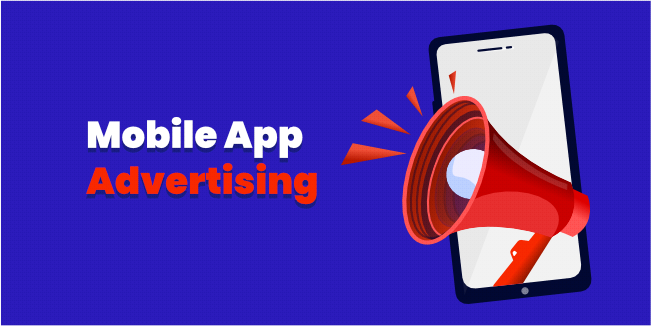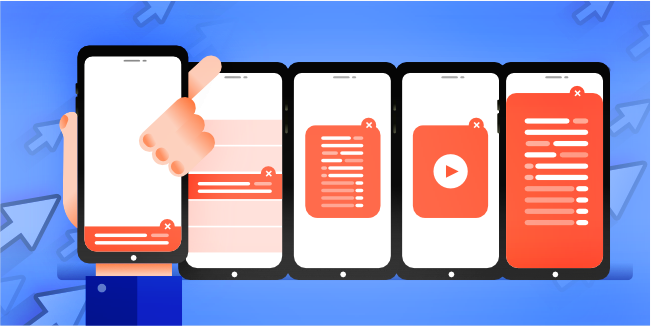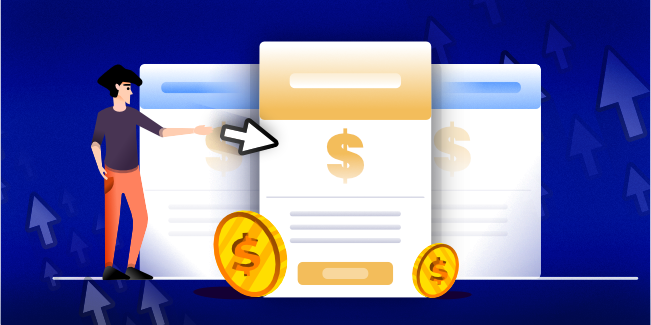Mobile Development
Business
mobileapps
ads
advertising
Mobile App Advertising Done Right - Everything You Need To Know

In-App advertising is a form of mobile publishing that allows app developers to get compensated for displaying advertisements within their applications. It helps publishers keep their content free for consumers, increasing downloads and offering easily scalable revenue.
You may be interested in the general concept of monetizing your application. Then, it is best to use one of the monetization methods. One of them is advertisements. We wrote a unique article about monetization in applications, "How to monetize mobile apps?" in which you will learn a lot of useful strategies, thanks to which you will earn money on your application. It is also worth trusting an offshore outsourcing company to know perfectly well whether in-app advertising has been carried out properly.
Advertising via apps is not only a significant player in the mobile world but globally. For this reason, it's become an integral part of any brand or agency's marketing strategy. In addition, mobile ad spending grew 23% year-over-year in 2021 and reached $295 billion.
As app usage increases, so does the potential for advertising. However, there is still a disconnect between the amount of time people spend on apps and the amount of money spent on app ads.
Mobile devices are unique in that they are often only used by one person, as opposed to desktop or laptop computers which might be shared. Thus, the apps on a mobile phone tend to be more closely connected to its owner's personal life and daily habits.
What is In-App Advertising?
In-app advertising is a source of income for mobile apps that want to use their real estate to show advertisements to their users. In other words, mobile advertising buyers pay money to show ads within their app. Genres such as Gaming, Social, Utility, and Entertainment are highly reliant on IAA (as well as IAP revenue).
We'll go through several methods to exhibit and evaluate the efficacy of these advertisements later on.
How Does In-App Ads Work?
The ecosystem is divided into two sides: the buyer side and the seller side.
Advertisers, such as software developers and agencies, are on the buying side. Apps that sell ad space are known as publishers on the selling side.
The ad network at the center is a broker that sells the publishers' in-app inventory (available advertising space) to advertisers.
The ad network receives a request from the app to display an ad. It employs sophisticated algorithms to find the most lucrative advertisers.
Advertisers use ad exchanges to buy advertising inventory from multiple sources in real time. Ad exchanges auction impressions to the advertiser willing to pay the most for them and act as a marketplace for publishers and advertisers. It results in more effective targeting of ads because publishers can offer their advertising space to the highest bidder.
The Demand Side Platform (DSP) allows advertisers to access the inventory of multiple ad exchanges. In contrast, the Supply Side Platform (SSP) allows publishers to place ads in front of their selected target audience.
Remember that Mobile Measurement Partners (MMPs) are a neutral, not-for-profit element of the ecosystem that assists advertisers in determining which ad networks deliver their most valuable consumers.
The Benefits of In-App Advertising

There are significant advantages to be gained if you can successfully use IAA. We're living in a mobile-first world. In North America, 26% of all media time and 88% of mobile time is spent within applications.
Let's take a look at some of the advantages.
Crucial Source of Income in the Freemium App Industry
Most apps are free to download but to make revenue, they either need a subscription model like Netflix or Spotify (IAP) or rely on ads (IAA).
For some types of businesses, like Gaming, most app owners won't be able to make enough money from IAP alone. It is more common in the genres that are not as popular, like Hyper Casual and Casual games with low rates of IAP (the former often only uses IAA).
Moreover, the UX of Gaming apps is more inclined to IAA since ads can be placed between levels and during transitions to increase engagement. For instance, this is opposed to a Shopping app where the goal is to get the user to purchase without any distractions that could make the user leave.
App owners can generate extra income by IAA, understanding the importance of in-app real estate as media costs continue to inflate.
Boost User Engagement
The right ad in the proper location at the right moment can encourage consumers to interact with it, resulting in greater engagement, retention, and revenue.
Rewarded videos, for example, provide users incentives (usually in-game currency) for viewing advertisements. They are very successful since they are user driven and may enhance engagement since they frequently need users to play on multiple days to get their reward. It is the case with gaming applications.
As an app developer, you can include an ad in your own program anywhere you believe it will be most effective. It means you can make more money by selling ads in your mobile app – not only at the top and bottom but also throughout the middle. Blending the advertisement into the flow will result in a less disruptive and superior user experience overall.
Increased In-App Purchase Income
The two most important sources of income are the IAA and IAP, as we previously stated. Linking the two (i.e., a mobile advertisement that results in in-app purchases) is critical for app owners.
According to the Kinsey report, people who see in-app advertising view 4.2 more items per session than organic users looking for something specific. That's 4.2 additional chances to convert a user into a paying customer.
Biggest Challenges of In-App Advertising

It's not as simple as putting an ad in one spot and waiting for the cash to come rolling in with mobile app advertising. Several challenges must be addressed.
Standing Out
According to statistics, over two-thirds of businesses (68%) primarily use IAA to boost brand recognition. That implies that there are a lot of advertisements on the app's user interface.
With so many brands and ads vying for attention, it can be challenging to get your brand noticed by users who would rather skip the ad and continue with their journey.
To counteract this, you must ensure that your ad is relevant to their interests, well-timed, and attractive.
Fighting Fraud
Typically, fraudulent activity revolved around phony app installations. However, as fraud detection improves and scammers get more devious, the practice of faking higher-worth in-app activities like watching an ad, completing a level, or registering has risen.
Advertisers will be blind to the true performance of their advertisements if they don't identify and stop these fraudulent activities. Such a mistake might cause advertisers to favor a fraudulent network since it delivered more "high-quality" users.
In-app activity fraud is a current trend that all advertisers should be aware of. They need to pay attention to any strange trends, even after the event has occurred.
Development Time
Anyone interested in the most popular way of building mobile applications, i.e., native development, knows perfectly well that the software development lifecycle is a complex process and can take a long time. Patience pays off, and focusing on details will help with the result. Check out our article "How Long Does it Take to Make an App?" To get to know even better why it is worth hurrying up slowly when creating an application and adapting advertising.
In-App Ads Types

There are a variety of ad formats. Some are subtle, while others call for interaction purposefully.
Banner Ads
Banner mobile ads are most likely the most recognized by customers. They generally appear as text accompanied by an image at the top or bottom of the screen, along with application content. A visual, text, and call-to-action button are all typical.
Video Ads
Video mobile ads are short film segments that usually appear before another video (think about the ad preceding the video you want to watch on YouTube). They're highly engaging, and they have high click-through rates.
Rewarded Video Ads
Rewarded videos are commonly found in gaming apps and have a direct value exchange. Users watch an advertiser's video and receive a reward from the app. If done correctly, rewarded videos can be great for user engagement, especially if rewards get progressively better the more days in row users watch them.
Interstitial Ads
Interstitial mobile ads, also known as full-screen ads, are less intrusive than other types of advertisements. They typically appear during a transition in an app, such as between levels in a game. Interstitial ads can be either static or video ads and usually contain richer forms of content than other types of ads.
Native Ads
For example, you might see a native ad for shoes on someone's social media feed or in the form of an advertisement as you scroll through a website. Like in native app development, the point of Native ads is to not stick out like a sore thumb and interrupt your browsing experience while still being eye-catching enough that you'll notice.
Playable Ads
Playable mobile ads are brief, mini versions of a game that runs before a user decide whether or not to install it. They're also fun and interactive, which is why they have some of the highest CPM rates for Gaming apps.
Offerwall Ads
The offer will ad, like the rewarded video, is often a page with a list of incentives. Users can choose their desired deal, including in-app currency such as lives or coins. These advertisements have high engagement rates since they are entirely user-driven and may help to extend session length.
In-App Pricing Models

Several pricing models are available, each varying in risk and reward for both the app publisher and the advertiser. Let's look at some of the advantages and disadvantages.
Cost Per Mille (CPM)
The CPM is the price an advertiser pays a publisher for every 1,000 (mille) ad views.
- Publisher Pros - CPM works well for app publishers because they only need to display the ad to receive compensation.
- Publisher Cons - CPM profit margins are tight, and if the publisher is only aiming for that target, they could be worse off missing out on more money from clicks.
- Advertiser Pros - Other models are priced higher, making this model a good deal.
- Advertiser Cons - There is no guarantee that the ad will generate clicks or conversions simply by being shown.
If you want to improve your brand's visibility, this is the product for you.
Cost Per Click (CPC)
The advertiser only pays the publisher when an ad is clicked with the CPC pricing model.
- Publisher Pros - Depending on the campaign goals, the publisher may be able to increase their price per click.
- Publisher Cons - Because the publisher may be subject to more impressions to generate the desired number of clicks, they may have to work harder for the money.
- Advertiser Pros - CPC (cost-per-click) is a beneficial model for advertisers since they only have to pay when someone clicks on their ad--a signal of interest.
- Advertiser Cons - When you search for a specific item, chances are that one or more of those clicks were unintentional, so you may wind up paying money and getting nothing in return.
It is your solution if you want to bring more people to your app and have a limited budget.
Cost Per Action (CPA)
The advertiser must pay the publisher when a user is sent to the media purchase page as a result of an ad (e.g., registration, purchase)
- Publisher Pros - By laser-targeting their audience, publishers can deliver results fast, making it a lucrative revenue stream as they're able to charge high CPA rates.
- Publisher Cons - CPA advertising is riskier for publishers because of stricter requirements. Advertisers may drive lots of traffic, but there's no way to guarantee that users will take the desired action.
- Advertiser Pros - CPA is a low-risk option that pays for itself based on specific actions instead of the general traffic.
- Advertiser Cons - There aren't many drawbacks other than the possibility of scaling being difficult. Advertisers can, however, become laser-focused on performance and neglect factors such as brand awareness.
It is the best case when you want the person to take a specific action, such as placing an order or signing up for a product.
Cost per Install (CPI)
This pricing strategy, also known as pay-per-install, implies that the advertiser will only be charged when a user installs their software.
- Publisher Pros - The margins for this type of business are much higher, and competitive markets demand premium price tags. It can be a very lucrative model if done correctly.
- Publisher Cons - Because crafting successful campaigns requires time and skill, you need to be alert while running them. Constantly revise your plans to produce better results.
- Advertiser Pros - It refers to the fact that you only pay for people who want your app, as opposed to a general audience.
- Advertiser Cons - The CPI can't tell you whether or not a person is using your app. They may download, launch, and delete it the next day, implying that you are essentially paying for nothing. There's also a possibility to go with lower-cost installations, but remember that these will bring in lesser-quality customers and possibly fraudulent installs.
We recommend this if your goal is to increase the number of installs or promote and distribute apps across a large audience.
Choosing which monetization approach to use might differ between apps and even different campaigns within an app. It's critical to figure out which one works best for your campaign.
Best Practices of In-App Advertising

Although the user may be interested in what you have to offer, advertising is an excellent way to communicate with him about anything that might be of interest. However, it's important to remember the unspoken rules not to make your application only a machine with advertisements.
Find Someone You Can Trust
It has been known for a long time that not everyone has to know everything, and even if this is the case, it is probably worth leaving the matter to specialists. Offshore it services are a good practice so that professionals can choose the right in-app advertising format. Such an offshore outsourcing company is not so much able to look after your application. Still, it can be responsible for the entire custom mobile app development.
Don’t Over Advertise
You may segment your audience into those who have installed or bought something and others who haven't by correctly categorizing them. Instead of showing ads to non-paying users, show them ads if they haven't converted.
Once you've hooked a customer, don't forget to change your messaging to keep them interested.
Testing is Everything
It isn't easy to pinpoint which combinations of conditions are ideal. To discover this, you must test, test, and test again.
Determine the most effective ad format for each campaign by testing various combinations. Also, try out different pricing models to find the best fit for your app. Evaluate which ad networks bring you the greatest return on investment.
Follow the Privacy Guidelines
The continuous changes to consumer privacy rules and regulations are almost impossible to keep up with. However, you must make sure your app aligns with the requirements.
Final Words
In-app advertising is a vital source of income for advertisers, especially in the freemium market. It is not difficult to get it right. Pay attention to suspicious activity and recent trends - you don't want to invest in what appear to be quality users but are fraudsters.
Also, understanding the effectiveness of your campaigns is vital to determining their success. Working with an unbiased MMP to evaluate data and provide insights is critical.
Don't forget about mobile app advertising channels, either. Social media, display ad networks, search ads, and even Amazon advertisements can serve almost all of the mobile app advertising discussed above. So if you've tried just one channel or mobile ad format that hasn't worked, keep trying new things.
We hope that with this handful of tips, we have prepared you well for your in-app ads work and that you have learned a lot from this article. Good luck!